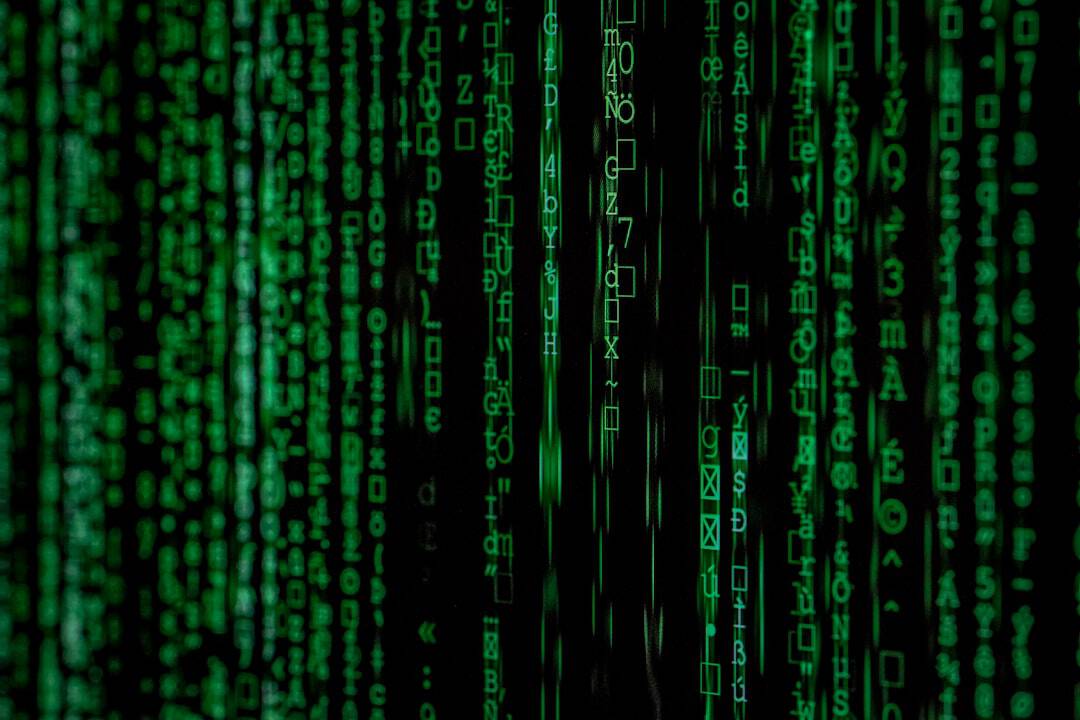In today’s digital age, cyber security has become a critical aspect of our personal and professional lives. With the increasing reliance on technology and the internet, the risk of cyber attacks and data breaches has also grown exponentially. It is essential to understand the importance of cyber security in order to protect sensitive information and prevent potential threats.
Cyber security encompasses a range of practices and measures designed to safeguard networks, devices, and data from unauthorized access or malicious attacks. This includes protecting against threats such as malware, ransomware, phishing scams, and more. By prioritizing cyber security, individuals and organizations can mitigate the risks associated with cyber threats and ensure the confidentiality, integrity, and availability of their data and systems.
Furthermore, understanding the importance of cyber security also involves recognizing the potential consequences of a security breach. A cyber attack can have devastating effects on both individuals and businesses, leading to financial losses, reputational damage, and legal implications. Personal information, financial data, and intellectual property are all at risk in the event of a breach, highlighting the need for robust cyber security measures.
Additionally, with the rise of remote work and online transactions, the need for secure digital environments has never been more critical. By understanding the significance of cyber security, individuals and organizations can take proactive steps to protect themselves against evolving cyber threats and ensure a safer digital experience.
Key Takeaways
- Cyber security is crucial for protecting sensitive information and preventing cyber attacks
- Strong passwords and two-factor authentication are essential for securing accounts and data
- Regularly updating software and operating systems helps to patch security vulnerabilities
- Backing up data regularly ensures that important information is not lost in the event of a cyber attack
- Avoiding phishing scams and suspicious links helps to prevent unauthorized access to sensitive information
Implementing Strong Passwords and Two-Factor Authentication
One of the fundamental practices in cyber security is implementing strong passwords and utilizing two-factor authentication. Passwords serve as the first line of defense against unauthorized access to accounts and sensitive information. It is crucial to create complex passwords that are difficult to guess or crack.
Strong passwords typically include a combination of uppercase and lowercase letters, numbers, and special characters. Additionally, it is important to avoid using easily guessable information such as birthdates, names, or common words. By creating unique and robust passwords for each account, individuals can significantly reduce the risk of unauthorized access.
In addition to strong passwords, two-factor authentication (2FA) provides an extra layer of security by requiring users to provide a second form of verification before accessing an account. This typically involves receiving a one-time code via text message, email, or through an authenticator app. By implementing 2FA, even if a password is compromised, unauthorized access can still be prevented.
This additional step adds an extra level of protection against potential cyber threats. Overall, by implementing strong passwords and utilizing two-factor authentication, individuals can enhance the security of their accounts and reduce the likelihood of unauthorized access.
Keeping Software and Operating Systems Updated

Another crucial aspect of cyber security is keeping software and operating systems updated. Software updates often include patches and fixes for known vulnerabilities and security flaws. Failing to update software and operating systems can leave devices and networks susceptible to exploitation by cyber criminals.
Hackers often target outdated software with known vulnerabilities to gain unauthorized access or deploy malware. By regularly updating software, individuals and organizations can ensure that their systems are equipped with the latest security enhancements and protections. Furthermore, operating system updates are essential for maintaining a secure digital environment.
Operating system providers regularly release updates to address security issues and improve overall system stability. Neglecting these updates can leave devices vulnerable to a wide range of cyber threats. It is important to enable automatic updates whenever possible to ensure that devices are consistently protected against emerging security risks.
By prioritizing software and operating system updates, individuals can strengthen their cyber security posture and reduce the likelihood of falling victim to cyber attacks.
Backing Up Your Data Regularly
| Data Type | Frequency | Storage Location |
|---|---|---|
| Documents | Weekly | External Hard Drive |
| Photos | Monthly | Cloud Storage |
| Videos | Bi-Annually | Network Attached Storage (NAS) |
Backing up data regularly is a critical practice in maintaining cyber security. Data backups serve as a safeguard against data loss due to hardware failure, human error, or malicious activities such as ransomware attacks. By creating regular backups of important files and information, individuals and organizations can minimize the impact of potential data breaches or system failures.
It is important to store backups in secure locations, such as external hard drives or cloud storage services, to ensure that they remain accessible in the event of an incident. Moreover, implementing a comprehensive backup strategy involves creating multiple copies of data and establishing regular backup schedules. This ensures that the most up-to-date information is preserved and readily available when needed.
In the event of a cyber attack or data loss, having reliable backups can be instrumental in restoring operations and minimizing disruptions. By prioritizing regular data backups, individuals can enhance their resilience against potential cyber threats and safeguard their valuable information.
Avoiding Phishing Scams and Suspicious Links
Phishing scams and suspicious links pose significant threats to cyber security. Phishing is a form of social engineering where attackers attempt to deceive individuals into providing sensitive information such as login credentials, financial details, or personal data. These attacks often occur through deceptive emails, fake websites, or fraudulent messages designed to appear legitimate.
It is crucial to exercise caution when interacting with unsolicited emails or messages and avoid clicking on suspicious links or attachments. Furthermore, individuals should be wary of requests for sensitive information or urgent action, as these are common tactics used in phishing scams. By remaining vigilant and verifying the authenticity of communications before taking any action, individuals can reduce the risk of falling victim to phishing attacks.
Additionally, organizations can implement email filtering solutions and provide training to employees on identifying and reporting phishing attempts. By staying informed about common phishing tactics and exercising caution when encountering suspicious links or messages, individuals can bolster their defenses against this prevalent form of cyber threat.
Using a Reliable Antivirus and Firewall

Utilizing a reliable antivirus program and firewall is essential for maintaining strong cyber security defenses. Antivirus software helps detect and remove malware, viruses, and other malicious programs that may compromise the security of devices and networks. By regularly scanning for potential threats and implementing real-time protection, antivirus software serves as a critical component in safeguarding against cyber attacks.
It is important to keep antivirus programs updated to ensure they are equipped to identify and mitigate the latest threats. In addition to antivirus software, firewalls play a crucial role in controlling incoming and outgoing network traffic based on predetermined security rules. Firewalls act as a barrier between internal networks and external sources, helping prevent unauthorized access and potential security breaches.
By configuring firewalls to filter network traffic and block suspicious activity, individuals can strengthen their overall cyber security posture. Implementing both antivirus software and firewalls as part of a comprehensive security strategy can help mitigate the risks associated with various forms of cyber threats.
Educating Yourself and Your Team about Cyber Security Best Practices
Education plays a pivotal role in promoting cyber security best practices within organizations and among individuals. By staying informed about the latest cyber threats, attack techniques, and security trends, individuals can make more informed decisions regarding their digital activities. This includes understanding common vulnerabilities, recognizing potential warning signs of cyber attacks, and knowing how to respond effectively in the event of a security incident.
Moreover, organizations should prioritize cyber security training for employees to raise awareness about potential risks and best practices for maintaining a secure work environment. This may involve providing guidance on creating strong passwords, identifying phishing attempts, securing devices, and adhering to company policies related to data protection. By fostering a culture of cyber security awareness and knowledge sharing, organizations can empower their teams to become active participants in safeguarding against cyber threats.
In conclusion, understanding the importance of cyber security is essential for protecting sensitive information, mitigating potential risks, and ensuring a secure digital environment. By implementing strong passwords and two-factor authentication, keeping software and operating systems updated, backing up data regularly, avoiding phishing scams and suspicious links, using reliable antivirus and firewall solutions, and educating oneself and others about cyber security best practices, individuals and organizations can enhance their resilience against evolving cyber threats. Prioritizing cyber security is not only a proactive measure but also a fundamental responsibility in today’s interconnected world.
By taking proactive steps to strengthen cyber security defenses, individuals can contribute to a safer digital landscape for themselves and others.
If you’re interested in learning more about the intersection of technology and security, you may want to check out this article on artificial intelligence (AI) and its impact on cyber security. The article discusses how AI is being used to detect and prevent cyber attacks, as well as the potential risks and ethical considerations associated with AI in the context of cyber security.
FAQs
What is computer cyber security?
Computer cyber security refers to the practice of protecting computer systems, networks, and data from digital attacks. This includes implementing measures to prevent unauthorized access, data breaches, and other cyber threats.
Why is computer cyber security important?
Computer cyber security is important because it helps to safeguard sensitive information, prevent financial loss, and protect the integrity of computer systems. Without proper cyber security measures, individuals and organizations are vulnerable to cyber attacks and data breaches.
What are some common cyber threats to computer security?
Common cyber threats to computer security include malware, phishing attacks, ransomware, denial of service attacks, and insider threats. These threats can result in data loss, financial damage, and reputational harm.
What are some best practices for computer cyber security?
Best practices for computer cyber security include using strong, unique passwords, keeping software and systems updated, implementing firewalls and antivirus software, regularly backing up data, and providing employee training on cyber security awareness.
How can individuals and organizations improve their computer cyber security?
Individuals and organizations can improve their computer cyber security by conducting regular security assessments, implementing multi-factor authentication, encrypting sensitive data, and establishing incident response plans in the event of a cyber attack. It is also important to stay informed about the latest cyber security threats and trends.











Leave a Reply